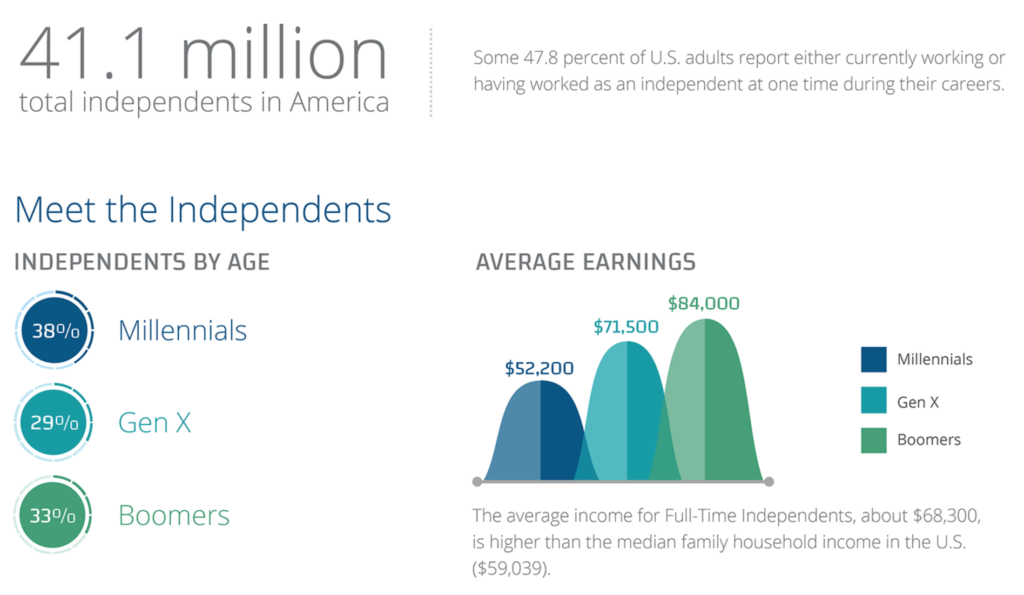For the 9th year in a row, our friends at MBO Partners published “The State of Independence in America,” a comprehensive look into the country’s independent workforce – a group of 41 million people who work as consultants, freelancers, contractors, temporary, or on-call workers. The findings of this year’s study show that, despite a strong job market and the lowest unemployment in decades, independent work remains not only increasingly viable as a choice for working-age Americans, but is steadily becoming a more profitable, sophisticated, and satisfying career path. Other key trends also emerged:
- Similarly to last year, a strong economy has meant that many independent workers have shifted back to traditional jobs, causing the number of full-time independents to fall by 3.1 percent. But the vast majority of those exiting independent work was classified as “reluctant” – people who work independently but would prefer to have payroll jobs. In fact, the number of people who are full-time independents by choice increased slightly in 2019. Since 2012, the percentage of workers who are independent by choice has risen from 66% to 81%.
- Even as low unemployment causes the number of full- and part-time independents to fall, the percentage of occasional independent workers – those working irregularly or sporadically as independents at least once per month – continues to grow. This year the figure rose by 6.3 percent from 2018 and 43 percent from 2016. Reasons include the desire to supplement income, follow their passion, test the waters of independent work, or develop new skills.
- For the first time since this study has been conducted, Millennials make up the largest age group of independent workers at 38% (from 37% last year). Baby Boomers, once the largest share of independents, now make up 33% (down from 35% in 2018). As Boomers age out of the workforce and Generation Z enters it, the demographics of independent workers will continue to change.
- The independent workforce is better educated, better remunerated, and more satisfied with their work than the average American worker. The average income for full-time independents, at $68,300, is higher than the median family household income in the U.S. ($59,039). Additionally, 40 percent of independent workers have a 4-year college degree and 17 percent have advanced degrees, while only 34 percent of Americans have 4-year college degrees and 12 percent of them have advanced degrees. Finally, independent workers rated their work more favorably than traditional job holders for several measures of work satisfaction, including control over their work, interesting work, appreciation from clients or employers, and even pay.

Independent workers contributed $1.3 trillion to the economy this year, equal to 6.2 percent of U.S. GDP. Ongoing trends show that, more than an alternative to traditional jobs, independent work is a legitimate career path that more Americans than ever are choosing to take. Almost half (48%) of all working Americans reported having worked independently at some point in their lives, and it has led many of them to more lucrative, balanced, and satisfying careers. This means that economic development strategies must take the independent workforce into account if we are to create lasting prosperity for every American.
